In terms of images.
Fourier transform converts spatial to frequency (Fourier) domain. DC value = average of sinusoids (sine waves), F(0,0) and average brightness/graylevel of image. Fourier has a complex number output....you can get the [magnitude and phase] or [real and imaginary] outputs.
What I don't get is what the complex number output actually represents when you do FFT? I know an image in the fourier domain is the sum of weighted sine waves but what does the output actually mean.
What is spatial frequency? When I look at definitions it states it as the rate of change of pixel values., what does this mean?


